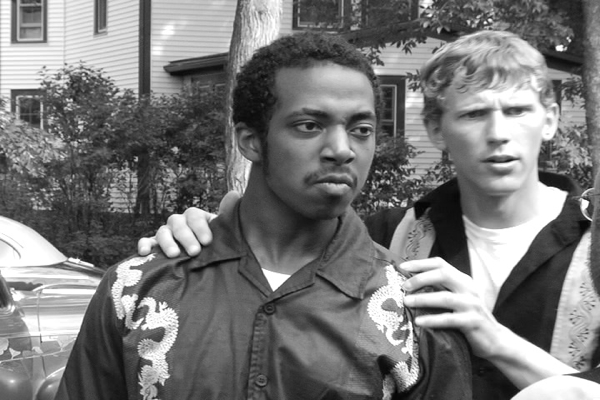Interview by Greg Carlson
In October of 2008, Minnesota State University Moorhead film studies professor Tom Brandau’s short documentary “Mr. Brown” was named best film in the Minnesota State Historical Society’s Greatest Generation Moving Pictures Film Competition.
HPR Associate Film Editor Greg Carlson spoke with Brandau about his accomplishment. The movie is available to view in its entirety at www.mnhs.org.
Greg Carlson: First of all, congratulations on the award and the movie. How did you originally hear about the contest?
Tom Brandau: I had known about the contest for a few years. It was an initiative that came out of the historical society’s program Minnesota’s Greatest Generation, which had been started a few years ago to recognize and honor the men and women who grew up in Minnesota during the Great Depression, came of age during World War II, and ushered in the boom years after the war.
My producer Jenn Bakken and I had been talking about making a film for the competition since the first year, but every summer something else would always come up and we’d run out of time. We knew that 2008 was going to be the final year and we were determined that one way or another we would have an entry ready by the deadline.
GC: What drew you to the topic area?
TB: As far as my interest in the subject, well that goes back many years. I’m a history nut to begin with and I’m especially interested in the past hundred years. Like many people my age, I grew up hearing stories of the Great Depression and World War II from my parents and grandparents. Having an opportunity to make a film about someone from that era was more than enough incentive.
GC: How did you find out you had won? What was that like?
TB: Well the whole thing was somewhat dramatic and a bit nerve racking. The day of the awards ceremony all of the entries, in this case more than 50, were screened at different venues in the Twin Cities. The ceremony itself was held at the Minnesota History Center in St. Paul.
None of the winners were announced beforehand; we just showed up and were told that all five of the winners would be screened in no particular order and then the awards would be announced afterward.
I was sitting with Lori Neal, one of the actors in the film, and when they showed “Mr. Brown” she grabbed my arm and said, “We won!” Of course at that moment we didn’t know what we had won. I had assumed that if we were going to win anything it would probably be the award for Best Collaboration, especially considering that more than 50 people helped to make the film.
So when they announced the winner for Best Collaboration and it wasn’t us, we started playing “process of elimination.” We knew that only three of the five awards could apply to “Mr. Brown” and when we eliminated those three, Lori looked at me with a big smile and said, “We took the top prize!”
It was a really fun moment. I looked up at Jim Brown, sitting in the back, and he gave me a big smile too.
GC: Tell us a little bit about how Jim Brown became your subject.
TB: I was originally going to make a film about Baseball Hall of Fame catcher Roy Campanella and the efforts to integrate minor league baseball in the late 1940s. After talking with author Steve Hoffbeck, I set about researching the idea and began pre-production.
It was while I was researching the baseball idea that I came across Jim Brown. Several people had recommended I interview Jim because he was very knowledgeable about the roots of black baseball in Minnesota and was old enough to remember going to minor league games back in the 1940s.
The problem was that no one knew how to get in touch with Jim. At one point I was told he had published several stories on the Minnesota Historical Society website, so I went there and started reading his work. I was immediately drawn to his stories, especially the autobiographical nature of them.
One story, “The Birthday Party” really struck me. It told of an incident that happened to Jim as a child, where he had been invited to a white friend’s birthday party only to be turned away at the door by the boy’s mother. I immediately saw the dramatic possibilities of retelling that poignant moment in Jim’s life.
I called my producer Jenn Bakken and said, “We’re changing focus. We’re going to make a film about Jim Brown.” After she read his stories she agreed and we finally found Jim and proceeded with the interview process.
GC: How much footage did you end up shooting?
TB: We shot about ten hours worth of material. Of course most of that footage was interview material with Jim. I spent three solid days with him talking about the particulars of his life from childhood to the present. Other than his amazing memory for detail, the thing that impressed me the most about Jim during those sessions was his stamina.
He just turned 81 in August and when I finally talked with him he told me that he had been dealing with cancer treatments and had lost about 100 pounds. I was concerned that the interview process might be too taxing on his health, but it really didn’t show. In fact I think it kind of rejuvenated him. Jim’s a tough guy.
GC: What did Jim Brown say to you when “Mr. Brown” was named the winner of the contest?
TB: He didn’t really say anything. He just gave me a big smile and that was the best part of the whole thing. It was great to see Jim get the recognition he deserves.
